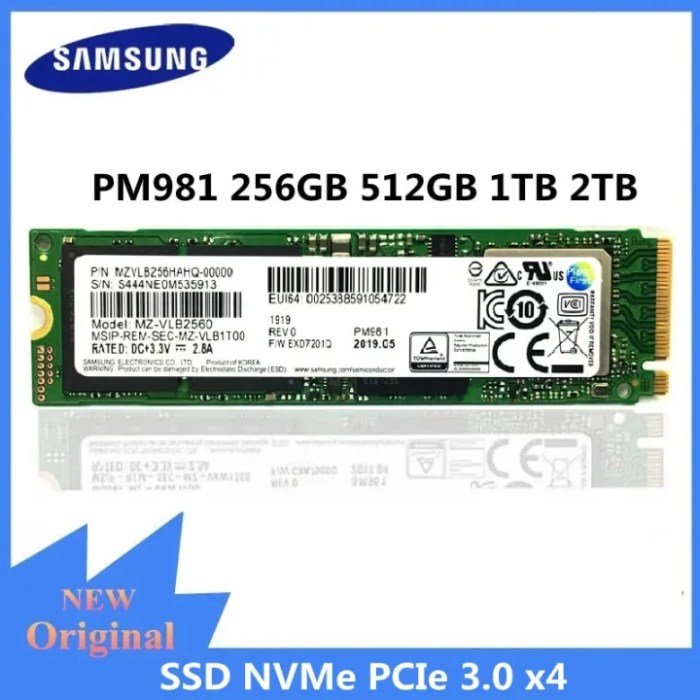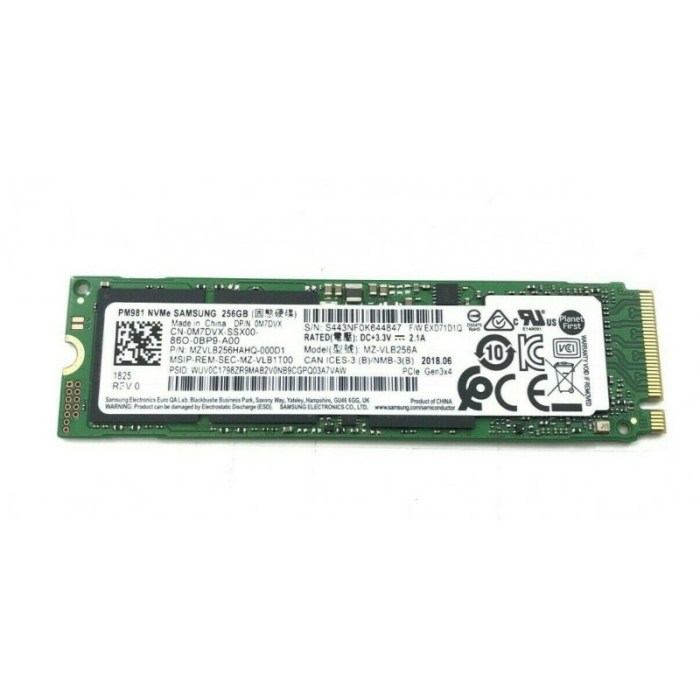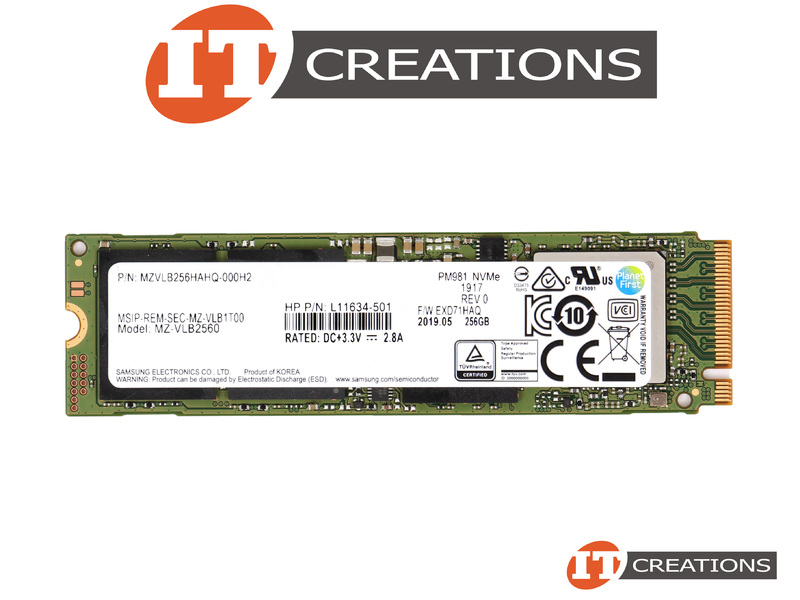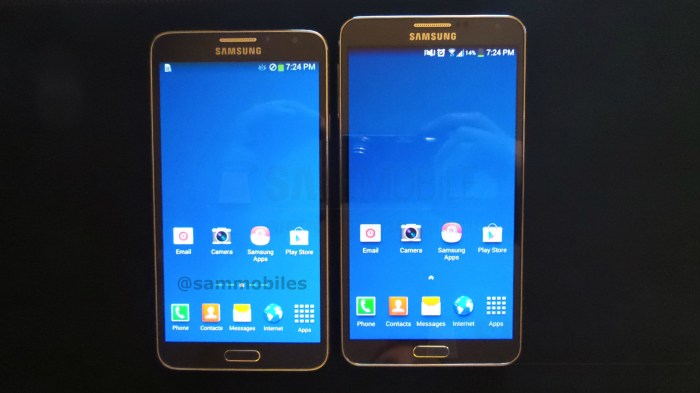Samsung PM981 NVMe 256GB SSD: A Detailed Overview

Source: slatic.net
Pm981 nvme samsung 256gb specification – The Samsung PM981 256GB NVMe SSD, while no longer actively sold by Samsung, represents a significant milestone in solid-state drive technology. This review explores its specifications, performance characteristics, and overall value proposition, offering a comprehensive understanding of this now legacy drive for those who may still encounter it.
Product Overview: PM981 NVMe Samsung 256GB, Pm981 nvme samsung 256gb specification

Source: proxnet.mk
The PM981 targeted users seeking a balance between performance and affordability. Ideal use cases included general computing, light gaming, and applications requiring faster boot times and data access compared to traditional SATA SSDs. Key features included its NVMe interface for high speeds, a compact M.2 form factor, and Samsung’s renowned reliability. While offering impressive performance for its time, its 256GB capacity limited its suitability for users with large storage demands.
Compared to other Samsung NVMe drives in its era, the PM981 256GB occupied a mid-range position. Higher capacity PM981 models offered greater endurance and potentially slightly improved performance due to the effects of capacity on wear leveling and performance optimization. Pricing was generally competitive with other NVMe drives in the same capacity range from competing manufacturers. The table below illustrates a comparison (note: exact specifications may vary slightly depending on the source and revision):
| Model | Capacity | Sequential Read (MB/s) | Sequential Write (MB/s) | Endurance (TBW) |
|---|---|---|---|---|
| Samsung PM981 | 256GB | 3400 | 1600 | 100 |
| Samsung PM981 | 512GB | 3400 | 1800 | 200 |
| Samsung 970 EVO Plus (example for comparison) | 250GB | 3500 | 2500 | 150 |
Performance Characteristics

Source: itcreations.com
The PM981 256GB delivered impressive sequential read speeds, typically around 3400 MB/s, while sequential write speeds were in the range of 1600 MB/s. Random read and write IOPS were also notably higher than SATA SSDs. The 256GB capacity, however, might have shown a slight performance difference compared to larger capacity models due to limitations in internal memory buffers and wear-leveling algorithms.
Larger capacity drives typically offer better performance sustained over longer periods of use, especially during intensive write operations.
Technical Specifications and Interface
The key technical specifications of the Samsung PM981 256GB include:
- NVMe interface: PCIe 3.0 x4, contributing to its high-speed performance.
- Form factor: M.2 2280, ensuring compatibility with most modern laptops and desktops.
- Controller: Samsung’s proprietary controller (specific model varies by revision).
- NAND Flash Memory: Samsung V-NAND (specific generation varies by revision).
Endurance and Reliability
The PM981 256GB typically had a Total Bytes Written (TBW) rating of approximately 100TB. This signifies the amount of data that can be written to the drive before potential performance degradation. The drive incorporated advanced error correction codes (ECC) and other data protection mechanisms to maintain data integrity and reliability. A system constantly writing large amounts of data (e.g., video editing or database server) would reach its TBW limit sooner than a system used primarily for light tasks (e.g., web browsing or document editing).
For instance, a video editor writing 100GB daily would exhaust the TBW in roughly one year.
The Samsung PM981 NVMe 256GB boasts impressive read and write speeds, making it a solid choice for demanding applications. Its performance is particularly relevant when considering the storage needs of high-end smartphones like the Samsung Galaxy S8+, whose specifications you can find detailed here: samsung galaxy s8+ specification. Returning to the PM981, its compact size and robust performance make it suitable for various embedded systems as well.
Power Consumption and Thermal Characteristics
Power consumption varied depending on the drive’s operational state. Idle power consumption was relatively low, while read and write operations consumed more power. The drive employed a combination of techniques, including thermal pads and a carefully designed internal layout, to manage heat dissipation. A typical illustration of the drive’s internal components might show the NAND flash chips arranged on a PCB, with a controller chip nearby, and thermal pads or other heat-dissipating materials placed strategically to enhance cooling.
The PCB itself is usually made of a material conducive to heat transfer, and the overall design prioritizes airflow around the components.
Compatibility and System Requirements
The PM981 256GB was generally compatible with a wide range of operating systems, including Windows, macOS, and various Linux distributions. No specific BIOS or firmware requirements beyond standard NVMe support were typically needed. However, compatibility issues might arise due to BIOS incompatibility or driver problems, especially in older systems. Troubleshooting typically involves updating the BIOS and drivers to their latest versions.
Comparison with Competitors
Compared to competing drives from manufacturers like Crucial and Western Digital at the time, the PM981 256GB offered competitive performance and pricing. The exact performance and price differences varied depending on specific models and sales. The table below provides a generalized comparison (note: exact specifications and pricing are subject to change and vary depending on retailer and time of purchase):
| Manufacturer | Model (Example) | Capacity | Sequential Read (MB/s) (approx.) | Sequential Write (MB/s) (approx.) | Price (USD, approx.) (at time of PM981 release) |
|---|---|---|---|---|---|
| Samsung | PM981 | 256GB | 3400 | 1600 | $70 – $90 |
| Crucial | P1 (example) | 250GB | 2000 | 1000 | $60 – $80 |
| Western Digital | SN550 (example) | 250GB | 2000 | 1700 | $65 – $85 |
The PM981’s strengths lay in its Samsung brand recognition, generally good reliability, and decent performance for its time. However, compared to higher-end drives, it might have lacked in sustained write speeds and endurance for heavy workloads.
Frequently Asked Questions: Pm981 Nvme Samsung 256gb Specification
What is the warranty period for the PM981 256GB?
Warranty periods vary by region and retailer. Check your retailer or Samsung’s website for specific details.
Is the PM981 compatible with PS4 or Xbox consoles?
Compatibility depends on the specific console model and its firmware. Consult the console’s documentation and Samsung’s specifications for confirmation.
Can I clone my existing drive to the PM981?
Yes, using appropriate cloning software is possible. Ensure compatibility between your cloning software and both drives.
How do I check the health status of my PM981 drive?
Most operating systems offer drive monitoring utilities. Samsung Magician software also provides detailed drive health information.




